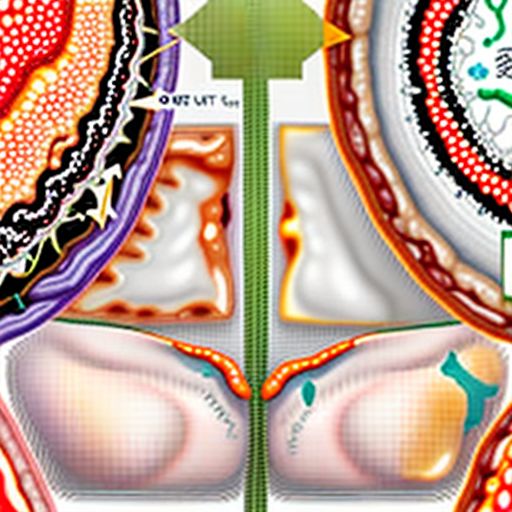Imagine this: a life-saving transplant offers hope for a healthier future. But then, a new battle begins, one fought within the body itself. This is the reality for many patients who develop Graft-versus-Host Disease (GvHD), a complication that can arise after a bone marrow or stem cell transplant.
This comprehensive guide delves into the complexities of GvHD symptoms, empowering patients and their loved ones with the knowledge they need to navigate this challenging condition. We’ll explore common questions, discuss treatment options, and provide valuable insights to help you better understand GvHD.
What is Graft-versus-Host Disease (GvHD)?
Before we dive into the symptoms, it’s crucial to understand the underlying mechanism of GvHD. In simple terms, it’s a case of mistaken identity. The newly transplanted donor cells (the “graft”) recognize the recipient’s body (the “host”) as foreign and launch an attack. This immune response can affect various organs, leading to a wide range of symptoms.
Recognizing the Symptoms: Acute vs. Chronic GvHD
GvHD symptoms can manifest in two main forms: acute and chronic. Understanding the difference is vital for prompt diagnosis and treatment.
Acute GvHD Symptoms
Acute GvHD typically occurs within the first 100 days after a transplant. It often presents with:
- Skin Rash: This is one of the most common symptoms, often appearing as a red, itchy rash that can resemble a sunburn. It often starts on the palms of the hands, soles of the feet, or face and can spread to other parts of the body.
- Liver Problems: Inflammation of the liver can cause jaundice (yellowing of the skin and eyes), dark urine, and abdominal pain.
- Gastrointestinal Issues: GvHD can affect the digestive tract, causing symptoms like nausea, vomiting, diarrhea, abdominal cramps, and loss of appetite.
Chronic GvHD Symptoms
Chronic GvHD can develop any time after the initial 100 days and may persist for months or even years. It can affect multiple organ systems, leading to a wide range of symptoms, including:
- Dry Eyes and Mouth: Reduced tear and saliva production can cause discomfort, blurry vision, and difficulty swallowing.
- Skin Changes: The skin may become thickened, tight, and discolored. It can also become more sensitive to sunlight.
- Joint Pain and Stiffness: GvHD can cause inflammation in the joints, leading to pain, stiffness, and reduced range of motion.
- Lung Problems: Inflammation in the lungs can cause shortness of breath, coughing, and wheezing.
hosting.yeuxuhua.com/wp-content/uploads/2024/07/graft vs host disease symptoms-6691e5.jpg" alt="graft vs host disease" width="512" height="512">graft vs host disease
When to Seek Medical Attention
Early detection and treatment of GvHD are crucial for improving outcomes. If you experience any of the symptoms mentioned above after a transplant, it’s essential to contact your transplant team immediately.
Living with GvHD: Frequently Asked Questions
What causes GvHD?
While the exact cause of GvHD is not fully understood, it’s believed to be triggered by differences in human leukocyte antigens (HLAs) between the donor and recipient. HLAs are proteins found on the surface of cells that help the immune system distinguish between self and non-self.
What are the risk factors for developing GvHD?
Several factors can increase the risk of developing GvHD, including:
- Degree of HLA Mismatch: The greater the difference in HLAs between the donor and recipient, the higher the risk of GvHD.
- Donor and Recipient Age: Older recipients and unrelated donors are associated with a higher risk.
- Previous Transfusions: Recipients who have received multiple blood transfusions before transplant may have a higher risk.
How is GvHD diagnosed?
Diagnosing GvHD involves a comprehensive evaluation, including:
- Physical Examination: Your doctor will assess your symptoms and medical history.
- Blood Tests: Blood tests can check for signs of organ damage and inflammation.
- Biopsy: In some cases, a biopsy of the affected organ may be necessary to confirm the diagnosis.
What are the treatment options for GvHD?
Treatment for GvHD typically involves immunosuppressant medications to suppress the immune system’s attack on the body. The specific medications and dosages will vary depending on the severity of the condition and the affected organs.
The Importance of Support
Living with GvHD can be challenging, both physically and emotionally. Support groups and online communities can provide a valuable lifeline, connecting you with others who understand your journey. Remember, you’re not alone.
This comprehensive guide has explored the complexities of GvHD symptoms, providing you with essential knowledge to better understand this condition. If you have any further questions or concerns, don’t hesitate to reach out to your healthcare provider for personalized guidance. Your health and well-being are our top priorities.
